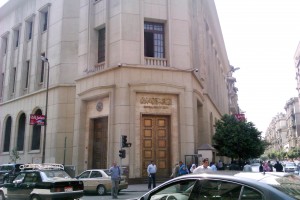
(Abdelazim Saafan/DNE Photo)
By Hossam Mounier
The Central Bank of Egypt’s (CBE) balances of foreign exchange reserves increased by $520m during June, registering $20.0797bn, compared to $19.5597bn in May, according to a CBE statement, Tuesday.
The value of gold listed within the foreign exchange reserves amounts to around $2.5bn, while the rest is liquidity that is being invested in the global financial markets.
According to the CBE, this level of the foreign exchange reserves covers Egypt’s merchandise imports for almost four months.
The recently announced level of foreign exchange reserves is the second highest in 2015. The reserves registered $20.525bn last April, supported by reserves from the Gulf that entered the CBE during that month.
Tamer Yousef, head of treasury and money markets at a foreign bank working in Egypt, said the increase in the foreign exchange reserves in June may be due to the $1.5bn in dollar bonds issued by the government on the international markets that month.
Minister of Finance Hany Kadry Dimian disclosed last month that the $1.5bn dollar bonds Egypt issued succeeded in attracting more than 290 investors. These bonds, Dimian said, witnessed a high demand from the international investors, where they reached $4.5m.
Yousef explained that part of the bonds’ proceeds will be used in paying the second instalment of the Paris Club dues, which are scheduled to be paid this year. The rest was added to the foreign exchange reserves, which lead to the increase.
Approximately 45% of these bonds were distributed in the US, 35% in UK, 11% in Europe, 7% in the Middle East, and 2% in the rest of the world.




